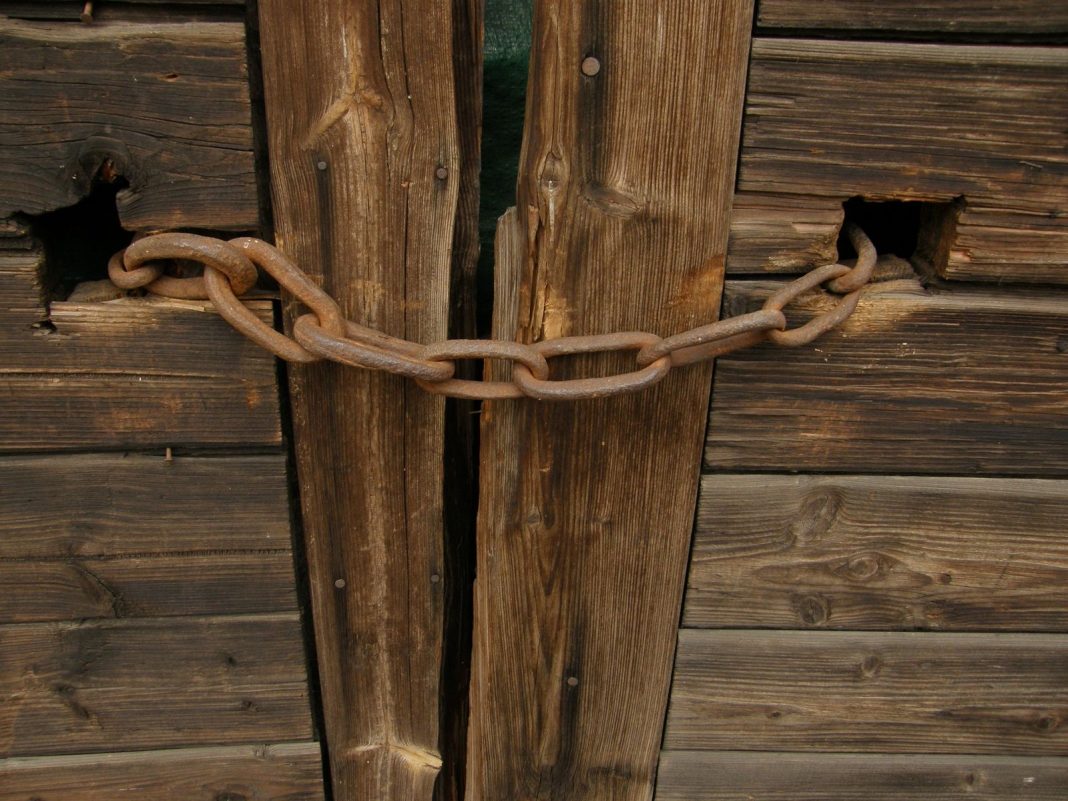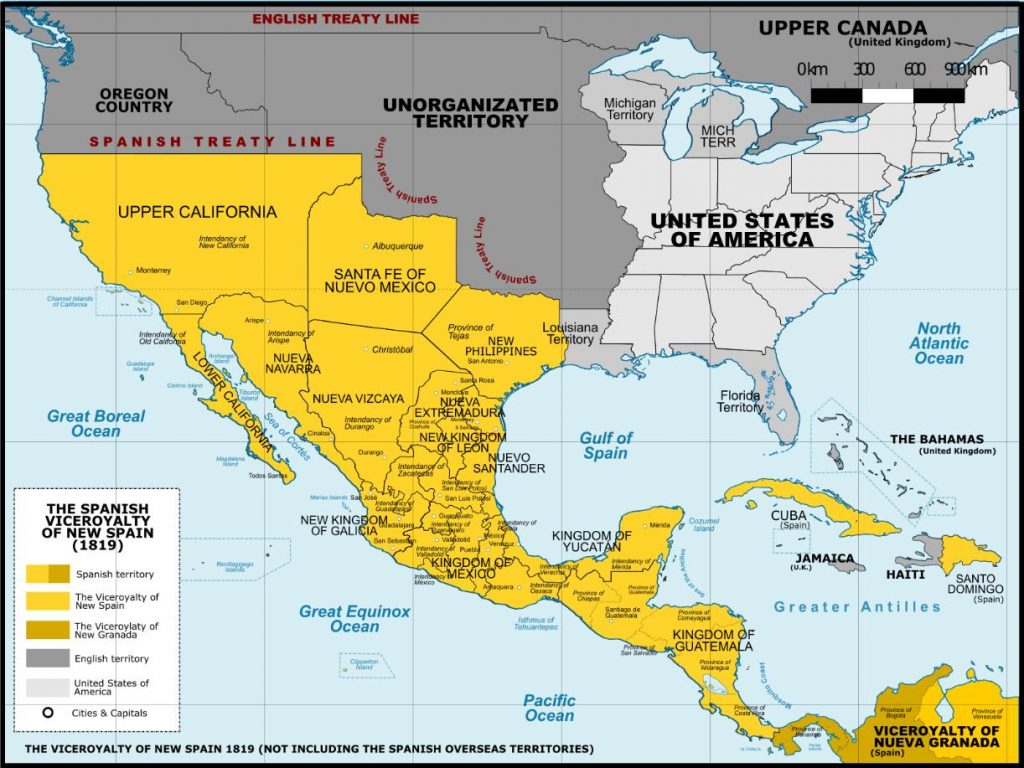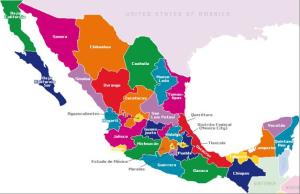By: Lynne Scully, Master of Labor Industrial Relations, Michigan State University, East Lansing, Michigan, U.S.A.
Editor’s Note: This article is from the website Pathways to Freedom in the Americas | Shared Experiences between Michigan, U.S.A, and Guerrero, Mexico. This website accompanies a traveling exhibition that has been on tour in Michigan, USA, since 2011. The project was funded by the Dr. Martin Luther King, Jr. Task Force and the Michigan Humanities Council, and is re-published with permission.
Conflicts Over Slavery Resulted in War Between the Nations
Mexico – Before the Conflict with The United States
When Mexico achieved its independence from Spain in 1821, and later when slavery was abolished in Mexico in 1829, the country then included most of the viceroyalty of New Spain, minus the Caribbean and the Philippines.
Mexico stretched from California and the present-day U.S. Southwest and encompassed all of Central America except Panama. The state of “Coahuila y Tejas” (now Texas) was included in the new nation of Mexico. The area known as Central America split from Mexico in 1823 as a result of the fall of the empire of Agustín de Iturbide, however, Mexico did keep the southern state of Chiapas. After Mexico gained its independence from Spain, it legalized immigration from the United States.
Map of Mexico before the Conflict with the United States
US Immigrants to Mexico Brought Human Slaves
Anglos from the United States sought and gained permission to settle in the Mexican state of “Coahuila y Tejas” (later known as Texas). Moses Austin was the first American immigrant to gain permission to settle in the state. His son, Stephen F. Austin brought 300 immigrants from the United States beginning in early 1822.
US Immigrants Could Purchase Land in Mexico According to Their Number of Enslaved Africans
Most of the immigrants came from the American south, and they brought their African slaves with them. Under Austin’s plan, each American immigrant was allowed to purchase an additional 50 acres of land for each slave he brought to the territory. At least 20,000 Anglos and their slaves eventually settled in the state. By 1825, one out of five American immigrants in “Texas” was an enslaved African.1
But, Mexico Abolished Slavery and Offered Full Citizenship to Blacks
At the same time, however, Mexico offered full citizenship to free blacks, including land ownership and other privileges. In 1823, Mexico forbade the sale or purchase of slaves and required the children of slaves to be freed when they reached the age of fourteen. In 1827, the legislature of Coahuila y Tejas (now Texas) outlawed the introduction of additional slaves and granted freedom at birth to all children born to a slave.2
As the number of Anglo-American immigrants in Mexico increased, Mexican authorities began to fear the United States would want to annex Texas. On April 6, 1830, the Mexican government passed a series of laws restricting immigration from the United States into Texas. The laws also canceled all unfilled business contracts and established customs houses in Texas to enforce the collection of customs duties.
Just two and a half months after Mexico abolished slavery in 1829, Tejas (Texas) Governor J.M. Viesca secured an exemption for his state. The land fees generated by the enslavement of African-Americans had become an important source of income for the local government.3
Mexico’s Abolition of Slavery Created Tensions with the USA
During this period of extremely tense relations between the two governments, Mexico consistently repudiated and forbade the institution of slavery in its territory, while U.S. slave-owners, who were immigrants in the Mexican state of Coahuila y Tejas (Texas), continuously sought ways to circumvent Mexican law.4
Texans Revolted to Keep Slavery
The abolition of slavery created tensions between the Mexican government and slave-holding immigrants from the United States. These tensions came to a head in the Anahuac Disturbances. The Anahuac Disturbances were uprisings of American immigrants in and around Anahuac in 1832 and 1835 which helped to precipitate the Texas Revolution in 1836. In that year, American immigrants in Texas declared its independence from Mexico which eventually led to the United States’ invasion of Mexico in 1846.
After the loss of Texas, Mexican officials refused to formally acknowledge Texas independence on the grounds that it “would be equivalent to the sanction and recognition of slavery.”
Mexicans Took Great Risks to Help Free African-Americans
After Texas independence, the slave population mushroomed and the number of runaways across the South-Texas–North-Mexico border, increased. The slave institution in Texas was continuously undermined by defiant Tejanos (Mexicans in Texas) who took great risks and invested enormous resources toward facilitating the escape of enslaved African-Americans. 5
After the Republic of Texas was created in 1836, Anglo-American views on slavery and race began to predominate and free blacks lost their rights as citizens.6 The 1836 Constitution of the Republic of Texas required free blacks to petition the Texas Congress for permission to continue living in the country.
The following year, all African-Americans living in Texas at the time of independence were allowed to remain. On the other hand, the legislature created political segregation; it classified free residents with at least one-eighth African heritage (equivalent to one great-grandparent) as a separate category, and abolished their citizen’s rights, prohibiting them from voting, owning property, testifying against whites in court, or intermarrying with whites.7 As planters increased cotton production, they rapidly increased the purchase and transport of slaves. By 1840, there were 11,323 slaves in Texas.8
Texas Independence Eventually Led to the US Invasion of Mexico
Texas’s independence from Mexico eventually led to the United States invasion of Mexico in 1846. Called the “Insurgency from the North” in Mexico, and the “Mexican American War” in the United States.
This conflict would result in the United States forcibly taking the Mexican states of Texas, California, Arizona, New Mexico, Nevada, Utah, and parts of Colorado. The occupation of this land is the basis of USA/Mexico immigration problems today.
Map of Mexico Today
References:
- Schwartz, Rosalie (1975) Across the Rio to Freedom, Texas Western Press, ISBN-10: 0874041023
- Barr, Alwyn (1996) Black Texas: A History of African Americans in Texas, University of Oakland Press, ISBN 0-806612878X, p.14
- Henson, Margaret Swett (1982), Juan Davis Bradburn: A Reappraisal of the Mexican Commander of Anahuac, College Station, TX: Texas A & M University Press, ISBN 978-0-89096-135-3, p.47
- Wilkins, Ron “Mexico Welcomed Fugitive Slaves and African American Job Seekers: New Perspectives on the immigration debate.”
- ^Barr, (1996) p.32
- ^Barr, (1996) p.6
- ^Barr, (1996), p.8
- ^Barr, (1996), p.17
Related Articles:












